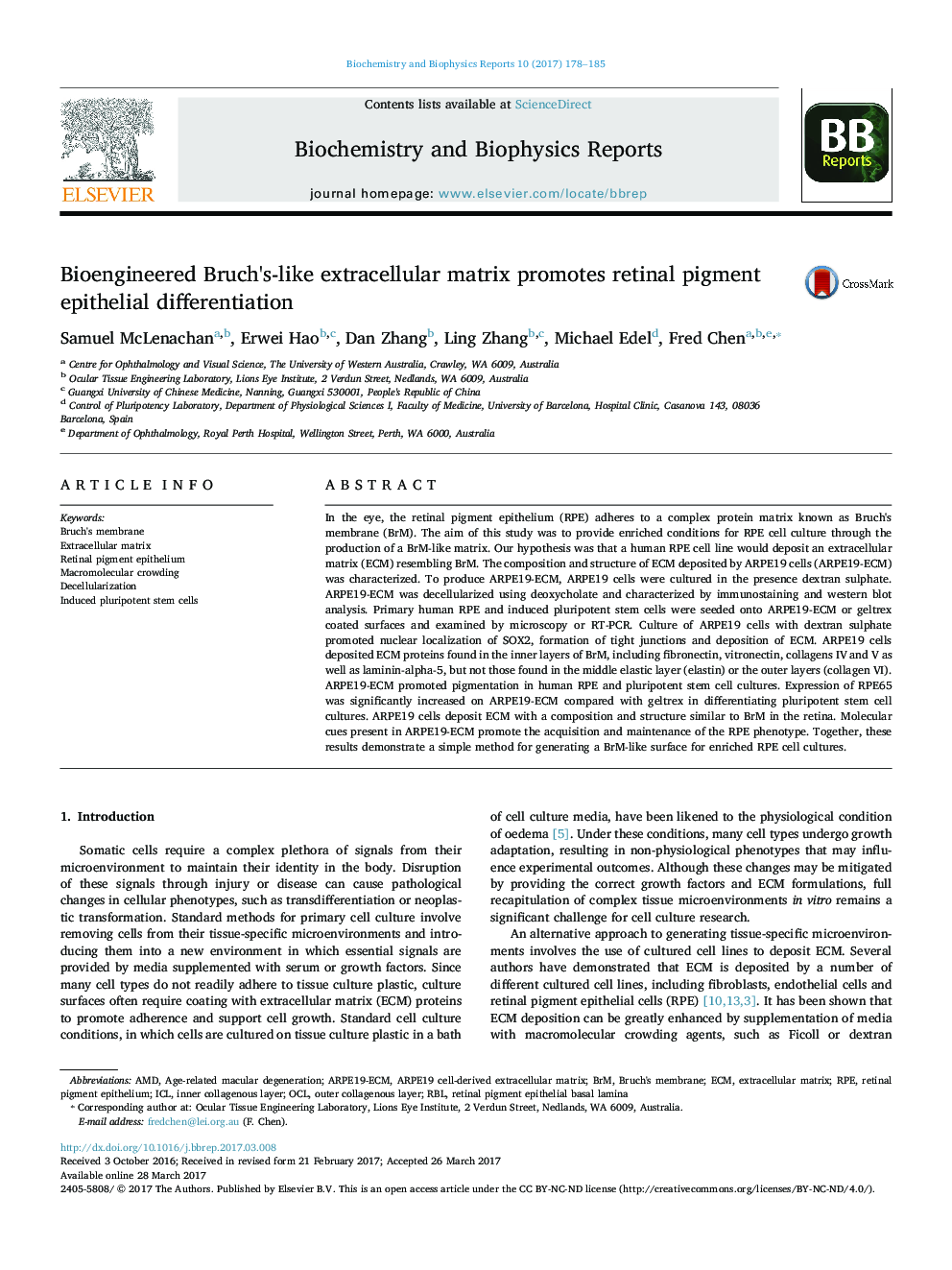| Article ID | Journal | Published Year | Pages | File Type |
|---|---|---|---|---|
| 5507009 | Biochemistry and Biophysics Reports | 2017 | 8 Pages |
â¢Macromolecular crowding promoted deposition of extracellular matrix by ARPE19 cells.â¢ARPE19 cells deposited matrix proteins found in the inner layers of Bruch's membrane.â¢ARPE19-ECM displayed similar microstructure to Bruch's membrane.â¢ARPE19-ECM promoted pigmentation in human retinal pigment epithelial cell cultures.â¢ARPE19-ECM promoted RPE differentiation from pluripotent stem cells.
In the eye, the retinal pigment epithelium (RPE) adheres to a complex protein matrix known as Bruch's membrane (BrM). The aim of this study was to provide enriched conditions for RPE cell culture through the production of a BrM-like matrix. Our hypothesis was that a human RPE cell line would deposit an extracellular matrix (ECM) resembling BrM. The composition and structure of ECM deposited by ARPE19 cells (ARPE19-ECM) was characterized. To produce ARPE19-ECM, ARPE19 cells were cultured in the presence dextran sulphate. ARPE19-ECM was decellularized using deoxycholate and characterized by immunostaining and western blot analysis. Primary human RPE and induced pluripotent stem cells were seeded onto ARPE19-ECM or geltrex coated surfaces and examined by microscopy or RT-PCR. Culture of ARPE19 cells with dextran sulphate promoted nuclear localization of SOX2, formation of tight junctions and deposition of ECM. ARPE19 cells deposited ECM proteins found in the inner layers of BrM, including fibronectin, vitronectin, collagens IV and V as well as laminin-alpha-5, but not those found in the middle elastic layer (elastin) or the outer layers (collagen VI). ARPE19-ECM promoted pigmentation in human RPE and pluripotent stem cell cultures. Expression of RPE65 was significantly increased on ARPE19-ECM compared with geltrex in differentiating pluripotent stem cell cultures. ARPE19 cells deposit ECM with a composition and structure similar to BrM in the retina. Molecular cues present in ARPE19-ECM promote the acquisition and maintenance of the RPE phenotype. Together, these results demonstrate a simple method for generating a BrM-like surface for enriched RPE cell cultures.
